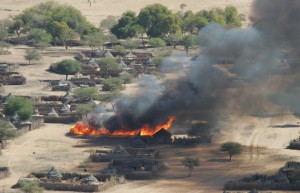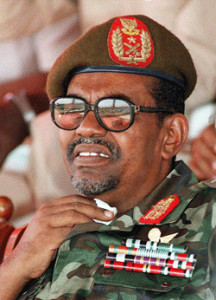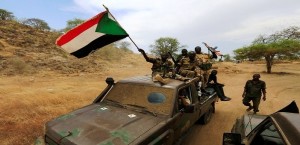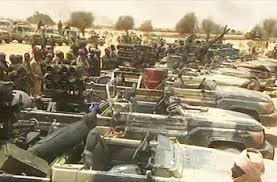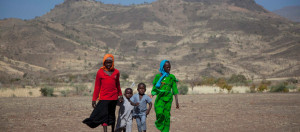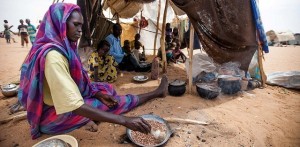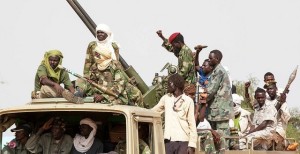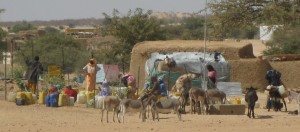“Completing the Darfur Genocide: Khartoum’s Renewed Ambition,” The Huffington Post, 13 January 2015 | http://www.huffingtonpost.com/eric-reeves/completing-the-darfur-gen_b_6440114.html .
Images of destruction from 2004 tell us too much about what is occurring now, especially in North Darfur
The Darfur region in the west of Sudan was once a focus of extraordinary American civil society activism; there was also once regular international news and human rights reporting from Darfur. None of this is true now. Moreover, despite the morally high-minded rhetoric from candidate and President Obama, proclaiming Darfur to be the site of “genocide” and a “stain on our souls,” almost none of this rhetoric informs his administration’s Sudan policies. Indeed, a senior State Department official proclaimed on the record (November 2010) that the U.S. had “de-coupled” Darfur from the bilateral issues between Washington and Khartoum that matter most: the regime’s anger at its continuing presence on the U.S. list of state sponsors of terrorism, and Washington’s lust for the putatively valuable counter-terrorism intelligence can Khartoum provide: it is an ongoing and cynical quid pro quo negotiation. Troublingly, this policy originates not with the State Department but rather with the various agencies that make up the U.S. “intelligence community” (a powerful oxymoron if one credits various reports of in-house fighting between the various agencies).
Omar al-Bashir, génocidaire-in-chief of the National Islamic Front/National Congress Party regime in Khartoum
The regime in Khartoum, always quick to exploit weaknesses or hesitation, saw this “de-coupling” as a signal from the Obama administration that they could “finish business” in Darfur without de-railing negotiations on issues of terrorism or indeed affecting any other feature of U.S policy in greater Sudan. And now, with much heightened military actions, completion of the genocide that began in 2003 is well underway. In fact, Darfur may present us with the first large-scale genocide in modern history that has a “sequel”; this “sequel,” however, relies on essentially the same plot, the same tools, the same goals, and the same victims as the “original”: non-Arab/African farmers, almost 3 million of whom have been driven from their homes by the Khartoum-orchestrated violence of the past decade, including half a million who are refugees in eastern Chad or who haven’t made it to a camp.
The “new Janjaweed”—better armed, more cohesive, and openly embraced by the Khartoum regime
Undefended villagers have no chance against such massive military force
The main difference is Khartoum’s replacement of the notorious Janjaweed, Arab militia forces that worked in concert with Khartoum in the early years of the genocide, but then increasingly on a “free-lance” basis, often fighting among themselves. Khartoum has reconstituted these brutal militia forces as the Rapid Response Forces (RSF), and in the main they are same men, though augmented by recruits from Chad, Niger, and other countries to the west of Sudan. What is different, however, is as important as the similarity in their “services rendered” to the regime.
South Darfur and currently North Darfur are bearing the brunt of the violence—violence that extends to IDP camps
Displacement is occurring at staggering levels—almost 1 million human beings in the past two years
The RSF are much more heavily armed than the Janjaweed, with weapons considerably more powerful and lethal. Khartoum intends for the RSF to finish the job in Darfur, and no expense will be spared in ensuring that they have superior firepower in fighting the Darfuri rebels. The RSF are more cohesive than the Janjaweed ever were, and represent a critical component of the Khartoum regime’s military power. This is made clear at various moments in the minutes recording a secret meeting on August 31, 2014, involving the top military and security officials of the regime (the minutes were leaked to me by a Sudanese source of unqualified honesty and integrity, and have been judged almost universally as authentic).
The RSF are the shock troops for the regular forces — Khartoum’s Sudan Armed Forces (SAF) — who are battle-weary, with some mid-level officers close to deserting. What is particularly dismaying to some professional soldiers in the SAF is that this time around the men in Khartoum haven’t even bothered to deny their connection to these paramilitary units; rather, the regime has openly welcomed the RSF at all stages of recruitment, training, and deployment. No matter that many are driven solely by the desire for booty and have no true military training, and know nothing about international law governing the conduct of war.
Former Justice and Equality Movement (JEM) fighters—lured by substantial salaries–are now joining the Sudan Armed Forces, attacking the very people for whom they supposedly rebelled.
With the RSF — more potent, more cohesive, and more tightly bound to the regime — Khartoum’s génocidaires have a weapon that is providing a decisive military edge. The evidence of the past few months has repeatedly links the RSF to large-scale atrocity crimes throughout Darfur; this information comes to us by way of Darfuris speaking to Radio Dabanga, far and away our best and most detailed source of information from the ground in Darfur. The bloated, ineffective UN/African Union Mission in Darfur (UNAMID) has failed dismally in fulfilling its civilian protection mandate, and has done little to provide security. As a consequence more than 2 million Darfuris have been newly displaced — most by violence — since UNAMID assumed its mandate in January 2008. Nor does UNAMID gather evidence about the endless bombing attacks on civilian targets, the epidemic of rape that defines life for many hundreds of thousands of Darfuri girls and women, or the increasingly numerous and violent military assaults on camps and villages near camps. Large new swathes of African agricultural land have recently been lost to the RSF and other opportunistic Arab militia.
In short, RSF violence is re-enacting the early years of the genocide, when many thousands of villages were burned or destroyed. Moreover, Khartoum is again coordinating militarily (now openly) with the RSF in attacks, often using aerial assets that range from the highly advanced Russian-built MiG-29 to helicopter gunships to the clumsily retrofitted cargo planes (also Russian-made) called Antonovs. Crude, shrapnel-loaded barrel bombs are simply pushed out the cargo bay from high altitudes, ensuring that they have no militarily useful accuracy but an immensely destructive effective on civilians. All such flights violate UN Security Council Resolution (March 2005).
The reports we have been receiving from Radio Dabanga for the past couple of months reveal a large convergence of RSF elements in North Darfur, particularly in the area of eastern Jebel Marra and regions immediately to the east of the massif (and to the west of the capital of North Darfur, el-Fasher). Many scores of villages have been burned or destroyed, hundreds of people killed, and hundreds of women and girls raped. These are conservative figures; if we had a fully effective and mobile professional reporting force on the ground, we might discover that these figures drastically understate the destruction and violence.
At the same time, in a year during which almost half a million Darfuris were newly displaced, the camps to which they flee have become increasingly limited in services they are able to provide (e.g., young children in North Darfur are experiencing acute malnutrition at three times the emergency threshold). International nongovernmental humanitarian organizations, and even the UN itself, are being roughly muscled by Khartoum through its security services and the absurdly named Humanitarian Aid Commission. There have been many expulsions of organizations and individuals over the years, and this past year was especially depleting. In addition to other UN officials, Ali al Za’atari of Jordan — head of the UN’s humanitarian mission in Sudan — was expelled on preposterous charges in late December 2014. Ominously, UNAMID’s current authorization runs only through June 30, 2015; it is unlikely to be renewed because of the threat of a Russian or Chinese veto. It will certainly be gutted in any event.
In August 2004 the notorious Janjaweed leader Musa Hilal articulated Khartoum’s genocidal ambitions in a memo originating in North Darfur: “change of the demography of Darfur” and “empty it of all African tribes.” Success for this brutal regime is closer than it has ever been, and comes closer by the day.
Refugees in eastern Chad continue to live the most tenuous of lives. Their number has grown to more than 360,000 over the past two years; they have no hope security will improve soon, allowing them to return to their country and homes.
[Eric Reeves, a professor at Smith College, has published extensively on Sudan, nationally and internationally, for the is sixteen years. He is author of Compromising with Evil: An archival history of greater Sudan, 2007 – 2012 (September 2012)
Follow Eric Reeves on Twitter: www.twitter.com/sudanreeves
